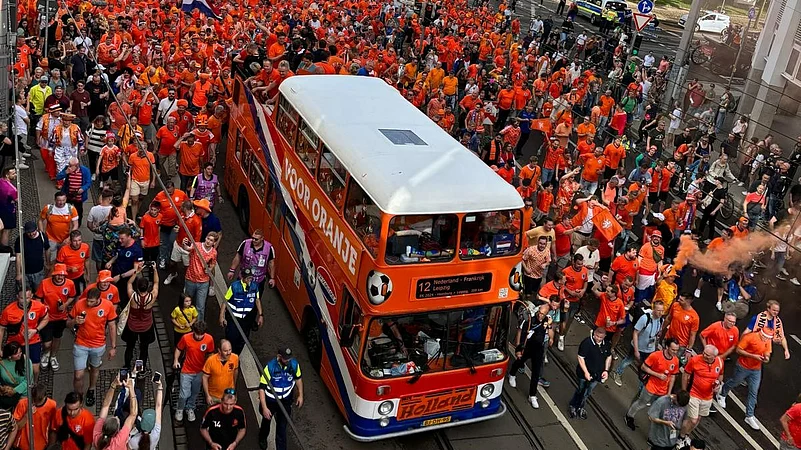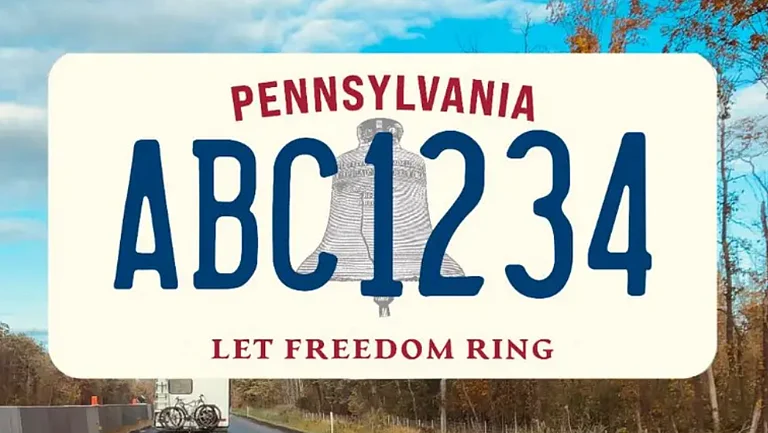About 20 years ago, a group of friends, united by their passion for the Dutch soccer team, decided to buy an old double-decker bus. Over beers, they envisioned painting it orange, outfitting it with a bar and powerful loudspeakers, and taking it on the road to support their team. Little did they know their whimsical idea would evolve into an internationally recognized phenomenon!
The bus, now a grand marshal leading tens of thousands of orange-clad Dutch fans, has become more than just a mode of transport. Whenever and wherever the Dutch national team plays, fans gather to sing, chant, and skip in unison, creating a joyous spectacle.
For the past month, this bus has been touring Germany during the European Championship, spreading an infectious spirit of joy and optimism. This contrasts sharply with the popular Dutch idiom, “Just act normal; that’s crazy enough.”

Evolution of an impromptu tradition
“We didn’t mean for this to happen,” said Henk van Beek, the bus’s official DJ and chairman of the group. “We’re just fans. That’s the beautiful thing.”
What started as a freewheeling endeavor has now become organized. Van Beek and his friends coordinate with local authorities and the Dutch soccer federation to manage the match day marches, which have grown so large they require security and police approval.
Anticipation builds for the next march
The next march, scheduled for Wednesday before the Netherlands’ Euro 2024 semifinal against England, is expected to be even bigger. Dortmund, the host city, is just over an hour from the Dutch border, with estimates of 75,000 Dutch fans making the journey.
The march itself is a significant attraction, even for those without tickets. “I’d always wanted to do it, just once,” said Andrea Kroese, who traveled from Epe with her family to join the party bus for the Netherlands’ tournament debut in Hamburg. “This is as close as it could be. We can come here, show the orange and be home for the kids to go to school tomorrow.”
The soundtrack of Dutch fan marches
The fan march has iconic songs like “Links Rechts” by Snollebollekes, which directs fans to bounce from left to right. Other staples include “Sweet Caroline” and classic Dutch singalongs, creating a festive and surprisingly peaceful atmosphere.
From London’s streets to global fame
Before becoming a symbol of Dutch national pride, the bus served London’s streets as part of the London Transport system. Purchased in 2004, it has since traveled 300,000 kilometers, often requiring repairs. It has survived grueling tests, including journeys through the desert in Qatar and the Brazilian jungle, and travels across South Africa and Ukraine.
“When people see us, it puts a smile on their face,” said Harm Otten, a member of the group. Van Beek and Otten, having attended numerous games worldwide, expressed joy for the younger fans experiencing the tournament atmosphere for the first time.
As the Dutch fans prepare for their next march, there is hope that a victory against England in Dortmund will spark another journey back to Berlin, with the iconic orange bus leading the way.
“We are sober people,” said Andries Veenstra, who left his home early Saturday without a game ticket. “But when you’re here, you can’t help but go nuts.”


















